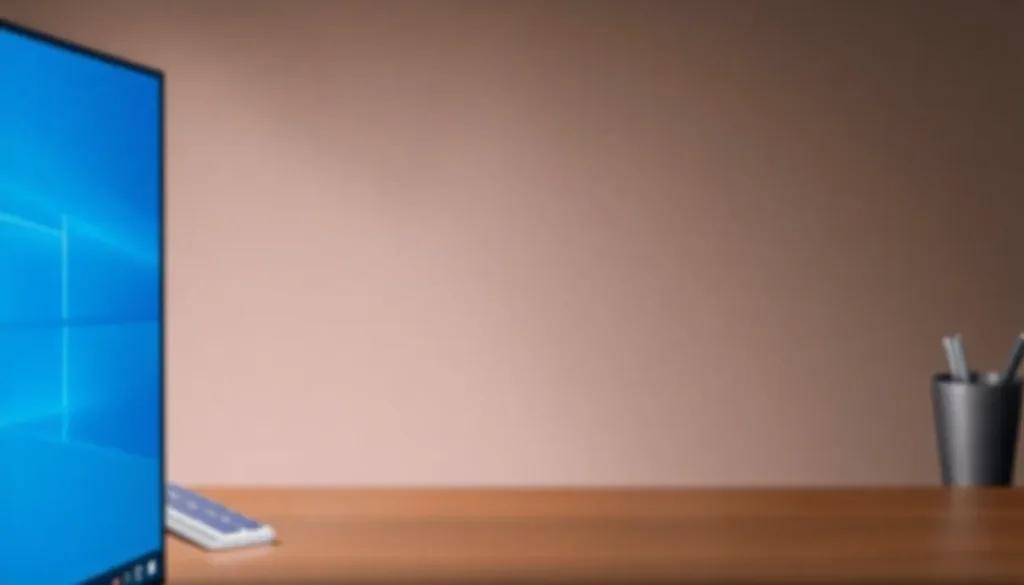Why I’m sticking with Windows 10 after its end of support

As the digital landscape evolves, many users find themselves at a crossroads with their operating systems. With the impending end of support for Windows 10, many are weighing their options. Should they upgrade, or is it worth holding onto their current setup? In this article, we'll explore the implications of Microsoft’s decision to end support for Windows 10, the reasons some users are reluctant to switch, and practical ways to continue using Windows 10 securely.
With the deadline looming, it's essential to understand the consequences of staying on Windows 10 post-October 14, 2025. Let's delve deeper into the context surrounding this transition and what you can do to navigate the change effectively.
What happens when Windows 10 support ends?
On October 14, 2025, Microsoft will officially terminate support for Windows 10. This includes the cessation of security updates, bug fixes, and new features. The implications of this decision are profound:
- Increased Risk of Cyber Threats: Without security updates, your PC becomes more vulnerable to malware and cyberattacks, as hackers often exploit unpatched security flaws.
- No Technical Assistance: Microsoft will no longer provide technical support for issues encountered on unsupported systems, leaving users to troubleshoot on their own.
- Compatibility Concerns: As software developers update their applications, they may no longer support Windows 10, leading to potential issues when trying to run newer programs.
The urgency surrounding this situation has led many users to consider upgrading to Windows 11, which has been positioned as the successor to Windows 10. However, millions are still holding onto their trusted systems.
Why some users are resistant to upgrading
Many users are hesitant to transition to Windows 11 for various reasons. Here are some common concerns:
- Hardware Limitations: Users with older PCs might find that their hardware does not meet the minimum requirements for Windows 11, leading to a costly upgrade.
- Familiarity and Comfort: Transitioning to a new operating system can be daunting. Many users prefer the familiarity and reliability of Windows 10.
- Perceived Lack of Necessity: For many, the improvements in Windows 11 do not justify the expense of a new machine or the effort of learning a new interface.
- Planned Obsolescence: Some users feel that Microsoft is pushing them towards new hardware unnecessarily, which breeds resentment and frustration.
These factors contribute to a significant portion of the user base remaining on Windows 10, despite the risks involved.
Assessing your current hardware
Many users have found that their existing machines simply do not qualify for Windows 11. For instance, if you have an older processor or insufficient RAM, you may face obstacles in upgrading. This situation raises the question: should users invest in new hardware or remain with what they have?
- Evaluate Your Needs: If your current PC meets your daily requirements, it may be wise to stick with it rather than invest in new hardware.
- Plan for Future Upgrades: Consider whether your current machine can be easily upgraded with additional RAM or storage, potentially extending its life.
- Monitor Performance: If your PC is still performing well and supports the software you need, it might make sense to hold off on an immediate upgrade.
Staying with Windows 10 securely
If you're determined to continue using Windows 10 after its support ends, there are several strategies you can implement to maintain security:
- Join the Extended Security Updates (ESU) Program: Microsoft offers this program for a fee, providing additional security updates for one more year.
- Utilize Local Security Practices: Regularly update your antivirus software, use a firewall, and avoid suspicious downloads to mitigate risks.
- Backup Your Data: Regular backups ensure that you won’t lose important files if your system becomes compromised.
Enrolling in the ESU program can be done in several ways:
- Pay a fee: A one-time fee can provide an additional year of updates.
- Enable Windows Backup: This feature allows you to back up files to OneDrive and can grant you extended updates.
- Use Microsoft Rewards: Accumulate points through various activities and redeem them for extended security updates.
Exploring unofficial options
If the official ESU options do not appeal to you, there are unofficial alternatives. One such option is using the UpDownTool, which allows users to convert their system to Windows 10 LTSC (Long-Term Servicing Channel). This version offers extended support until January 13, 2032, without the usual bloatware.
However, switching to LTSC does come with caveats:
- No Feature Updates: LTSC versions do not receive regular feature updates, which can limit your access to new functionalities.
- No Microsoft Store: The LTSC version does not support apps that rely on the Microsoft Store.
- Third-party Risks: As a third-party solution, using UpDownTool carries inherent risks, as it is not officially endorsed by Microsoft.
What’s next for Windows 10 users?
As the deadline approaches, many users are considering their next steps. Some may ultimately decide to upgrade to Windows 11, while others might explore alternative operating systems like ChromeOS or Linux. The decision largely depends on individual needs and comfort levels with technology.
For those who remain committed to Windows 10, the Extended Security Updates program and unofficial tools like UpDownTool can offer viable solutions to navigate the transition period.
For more insights on managing your operating system transition, you might find this video helpful:
Ultimately, whether you choose to upgrade or stick with Windows 10, being proactive about your decisions and understanding the implications will ensure a smoother experience in the evolving tech landscape.




Leave a Reply